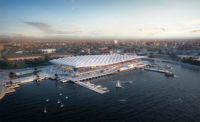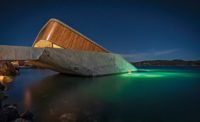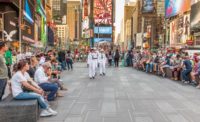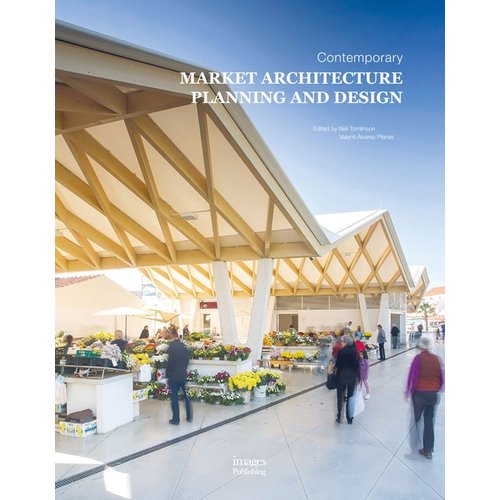While soaring skyscrapers have come to punctuate many skylines in the Middle East, the Sultanate of Oman is using another building type to celebrate the region’s culture. The low-rise Muttrah fish market completed earlier this year by Snøhetta marries the functions of a marketplace with theater-like seating areas that put the richness of the market’s activity on display.
The signature architectural element of the 43,000-square-foot market is a sweeping winged canopy that gives it an unlikely sculptural profile evocative of a gallery or event space. The canopy curves to echo the shape of the adjacent harbor where fishermen haul in their catch; passengers on the cruise ships which dock there regularly are immersed in the region’s rhythms and social traditions.
Compared with the old market, which was a collection of open-air stalls and crates, the new building’s 71,041-square-foot slatted aluminum canopy stands as a landmark. In keeping with traditional markets, or souks, the Muttrah is the center of a rich mix of commerce, culture, and community, drawing in locals and curious travelers.
The fish market and the traditional souk bookend the Muttrah Corniche, a popular tourist spot and lively cultural hub.
“We wanted to build in a manner that complemented the urban fabric of the city,” said Snøhetta in a statement. To do that, the team referenced cultural elements. The canopy’s ribbed design and curving lines were inspired by Arabic calligraphy and by fish bones.
They also needed the materials to work with Oman’s hot, dry climate. So Snøhetta partnered with Dutch firm Central Industry Group to develop the 2,400 aluminum lamellae used in the roof of the gill-shaped pavilion. They provide shade and ventilation throughout the market, while preserving the open-air feel. Opting for a perforated façade of glass-reinforced concrete also adds natural cooling that allows sea air to pass through the building’s skin.
All of the market’s components from stalls to the façade walls were designed and manufactured specifically for this project. That includes the ground-floor stalls of stainless steel. They were fabricated by Areen Enterprises to create hygienic, well-lit spaces for fish and vegetable vendors’ wares.
As the city welcomes more tourists, the market has begun including modern offerings such as cafés and a rooftop garden.
A second-floor seafood restaurant features a view of the market below. From nearby seating areas tourists can enjoy the market while it’s open, then linger to soak in the harbor view after the market has closed.








